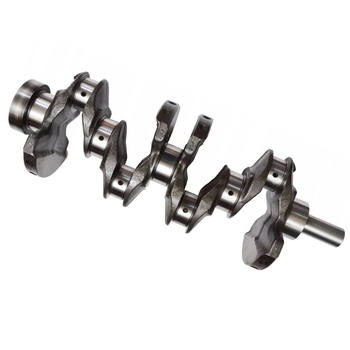Introduction
Have you ever wondered how a seemingly small component like a crankshaft can significantly impact your vehicle's performance? As it turns out, lightweight crankshaft designs offer numerous benefits, from enhanced engine responsiveness to increased fuel efficiency. Let's delve into the fascinating world of crankshaft engineering and discover why lightweight designs are gaining traction.
The Role of the Crankshaft in Engine Performance
Understanding the crankshaft's crucial function in an engine is essential before discussing its design. The crankshaft transforms the reciprocating motion of the pistons into rotational motion, which ultimately drives your vehicle's wheels. In my experience, even minor improvements in crankshaft design can yield substantial performance gains.
Traditional Crankshaft Design Limitations
Traditional crankshafts are typically made of cast iron or steel, making them heavy and prone to torsional vibrations. These vibrations can lead to increased wear and tear, reduced engine lifespan, and compromised performance. Furthermore, heavy crankshafts require more energy to rotate, which negatively impacts fuel efficiency.
The Advantages of Lightweight Crankshaft Designs
Lightweight crankshaft designs address the limitations of traditional crankshafts by using advanced materials and innovative engineering techniques. Here are some of the key benefits:
Improved Engine Responsiveness
Since lightweight crankshafts require less energy to rotate, engines equipped with them can accelerate more quickly and provide better overall responsiveness. This improvement is particularly noticeable in high-performance vehicles, where rapid acceleration is crucial.
Enhanced Fuel Efficiency
Lightweight crankshaft designs contribute to improved fuel efficiency by reducing the energy required to rotate the crankshaft. This reduction in energy consumption translates to fewer fuel costs and lower emissions, making lightweight crankshafts an environmentally friendly choice.
Reduced Engine Wear and Tear
By minimizing torsional vibrations, lightweight crankshaft designs help decrease engine wear and tear, leading to extended engine life and reduced maintenance costs. It's worth noting that a longer-lasting engine can also contribute to the vehicle's overall value.
Practical Applications and Examples
Lightweight crankshaft designs are being adopted across various industries, including automotive, aerospace, and marine. Here are a few examples:
- High-performance sports cars utilize lightweight crankshafts to achieve rapid acceleration and improved handling.
- Aircraft engines benefit from lightweight crankshafts, which help reduce fuel consumption and increase payload capacity.
- Marine engines equipped with lightweight crankshafts offer enhanced power and fuel efficiency, making them ideal for both recreational and commercial vessels.
Conclusion
In conclusion, lightweight crankshaft designs offer numerous advantages for engine performance, fuel efficiency, and longevity. As the demand for more responsive, fuel-efficient, and eco-friendly vehicles continues to grow, it's clear that lightweight crankshafts will play an increasingly important role in the future of engine design. To learn more about how our cutting-edge crankshaft solutions can benefit your vehicle, please visit our official website:
For more detailed information, please visit our official website: lightweight crankshaft designs




